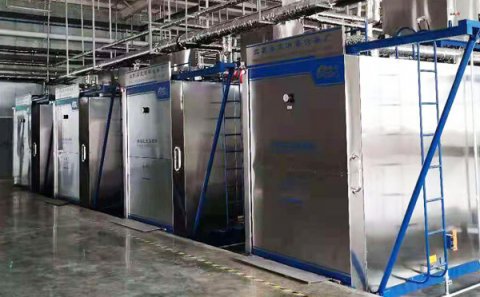
Physical PQ of sterilizer
The results from OQ can be used to identify the features to be evaluated in PPQ process.
Physical PQ (PPQ) shall prove PPQ
- Meet the specified acceptance criteria throughout the loading process during the proposed routine process specification.
- The reproducibility of the process.
The PPQ shall include at least three planned qualification cycles, conducted continuously in the same study, and meet all specified acceptance criteria. PPQ can be performed during MPQ. If the PPQ is performed simultaneously with at least three MPQ runs, at least one additional PPQ run should be performed using the complete normal process specification.
If the failure can be attributed to factors unrelated to the effectiveness of the validated process, it can be recorded as unrelated to process performance without the need for three consecutive successful runs. Examples of such failures may include, but are not limited to, power failures, other service interruptions, or external monitoring equipment failures.
PPQ shall confirm the following process: PPQ
PPQ shall be carried out in accordance with the loading pattern and pallet separation specified in the documented procedure. For larger pretreated regions, small loads do not have a significant effect on the regional dynamics, so it is not necessary (and may not be practical) to study the pretreated regions under various load states.
The PPQ guidelines for pretreatment also apply to performance qualification of conditioning (i.e. during sterilization).
- a) The minimum temperature for the product to enter the sterilization process and / or the specified conditions required for the sterilization process shall be determined;
- b) At the end of the prescribed pretreatment time (if used), the sterilization load temperature and humidity have been determined;
It is important to determine and report product temperature and humidity ranges for sterilization loads after exposure to the prescribed pretreatment time (if used).
- c) The specified maximum running time between the completion of pretreatment (if used) and the start of the sterilization cycle is appropriate;
The temperature and humidity conditions of the product may be affected during the transfer of the product from pretreatment (if used) to the sterilization room. It is important to ensure that this effect is taken into account during PQ and that the maximum time specification for product transfer during routine sterilization is reflected during PQ by ensuring the transfer time specified in the PQ.
- d) At the end of the specified treatment time, if used, the sterilization load temperature and humidity have been determined;
Temperature and humidity sensors shall be located within the sterile barrier system or between the unit packages of the sterilization load. When using pretreatment, the product should be pretreated within the specified time range. When pretreatment is not used, the temperature and relative humidity in the load shall be within the specified limits before the end of the conditioning phase of the cycle.
Within the time required for the sterilization load to reach the minimum predetermined temperature and humidity, the temperature and humidity curve within the sterilization load shall be evaluated.
For products, consideration should be given to installing humidity sensors in load areas where humidity changes are most likely to occur,
e. G. center, edge and surface of tray. For PQ, humidity sensors should be placed in the package (if possible) within the load range. This can be achieved by placing the sensor in the sterile barrier system or between the unit packages.
- e) If the parameters are released, record the chamber humidity;
- f) The gas EO has entered the sterilization room;
If parametric release is used, the EO concentration curve for the entire gas residence phase should be evaluated to determine the change of gas concentration during that phase.
-
g)pressure rise and the quantity of EO used or concentration of EO in the sterilizer chamber have been established . If parametric release is to be used;
-
h)during the sterilization cycle, the temperature and humidity (if recorded) of the chamber and, where applicable, other process parameters have been established;
-
i)the temperature of the product load during exposure has been established;
-
The temperature sensors within the sterilization load should be placed in the locations that are most likely to experience the greatest temperature variation. These locations should take into account hot or cold spots located during OQ. The locations of hot and cold spots within a load can be significantly different than the locations in an empty chamber.
- During PQ, it is important to take into account the relationship between the load temperature and the chamber temperature in order to ensure adequate load temperature in the routine process. If sensors are used in the sterilization chamber and 100 % EO or potentially flammable sterilant mixtures are used, the temperature and humidity sensors should be intrinsically safe, or should be of an explosion proof design. These sensors should also be functionally compatible with EO and with any diluent gases.
- j)during aeration (if used), the temperature of the sterilization load has been established.
The temperature within the sterilization load during the aeration process should be measured over the period of time required for the sterilization load to attain acceptable residual levels or measured over the period of time required for the sterilization load temperature to stabilize.
- NOTE This can be established during additional studies after completion of MPQ/PPQ.








Comments: